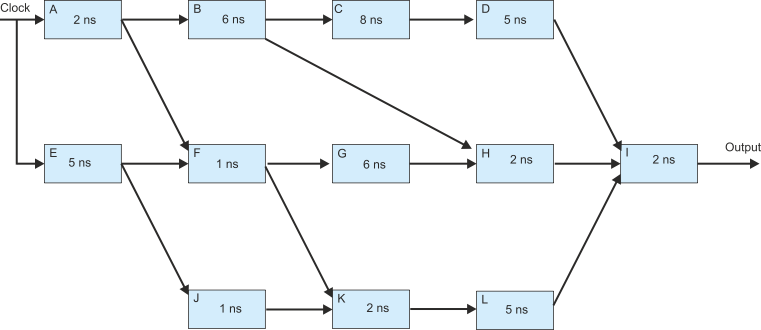
Principles of Pipelining
Here we look at the notion of pipelining, a technique that has done so much to improve the performance of computers without requiring significant changes in the underlying technology; that is, it does not rely on faster clocking of faster devices.
Consider the system below that consists of a network of interconnected building blocks
or circuits. Each block is labeled A to L and has an input-
If you consider the top row of blocks A, B, C, and D, the delay of a signal through the circuit is 2 + 6 + 8 +5 = 21 ns. This means that the output from block D will not be valid until at least 21 ns have elapsed since block A was clocked.
How long does it take for the output to become valid?